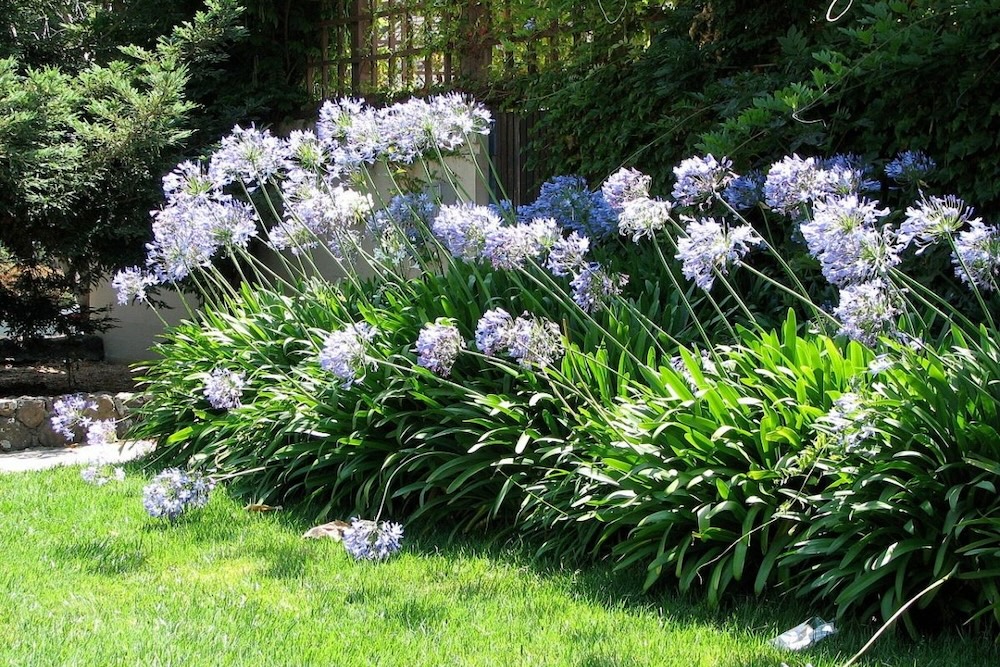Mastering the Art of Agapanthus Treatment: Vital Steps for Healthy And Balanced Development and Lively Blossoms
In the world of gardening, the cultivation of agapanthus stands as a satisfying venture for those who seek to nurture these stylish flowering plants. From selecting the best variety to mastering pruning strategies, the journey in the direction of growing flourishing agapanthus plants is complex and holds the key to unlocking the full possibility of these botanical gems.

Selecting the Right Agapanthus Range

When picking the ideal Agapanthus selection for your yard, consider factors such as environment viability, blossom shade, and growth practice. Agapanthus, commonly understood as Lily of the Nile or African lily, is available in a variety of shades varying from tones of purple and blue to white. Pick a bloom color that matches your existing garden palette to create a harmonious landscape. Furthermore, think about the climate in your region to guarantee the Agapanthus variety you pick can grow in your details problems. Some ranges are extra forgiving of chilly temperatures, while others favor warmer environments. Recognizing the growth practice of different Agapanthus ranges is crucial for correct positioning within your garden. Some selections have a clumping growth practice, ideal for boundaries or containers, while others have an even more spreading nature, suitable for ground cover or mass growings. By meticulously examining these aspects, you can choose the excellent Agapanthus range to enhance the elegance of your garden.
Perfect Planting Problems
Considering the optimum environmental demands is essential for effective Agapanthus farming. Agapanthus flourishes in well-draining dirt with a slightly acidic to neutral pH level. When growing, select a location that gets full sunshine to partial color. In hotter climates, supplying some mid-day shade can stop scorching of the fallen leaves. Agapanthus plants are sensitive to cold temperature levels and need to be safeguarded from frost throughout wintertime months.
To ensure healthy and balanced development and vibrant flowers, plant Agapanthus light bulbs at a depth of about 2-4 inches and space them 8-12 inches apart. Adding raw material, such as compost, to the soil can enhance drain and fertility, promoting robust root development. Mulching around the base of the plants aids preserve dampness and subdues weed development. Routine watering is vital, particularly throughout the growing season, to maintain the dirt continually damp but not soaked.
Watering and Feeding Tips
Maintaining proper dampness levels and offering essential nutrients are key elements in the care program for Agapanthus plants. When it comes to sprinkling Agapanthus, it is essential to strike an look what i found equilibrium. These plants like consistently damp soil yet are susceptible to root rot if overwatered.
Feeding Agapanthus is essential for advertising healthy and balanced development and respected blossoms. Apply a well balanced fertilizer, such as a 10-10-10 formula, in the very early spring as new growth arises. Repeat this application every 6-8 weeks throughout the expanding season. Avoid extreme fertilization, as it can cause rich foliage at the expense of blossoms. Constantly comply with the manufacturer's instructions for proper dilution and application methods. By complying with these watering and fertilizing pointers, you can ensure your Agapanthus plants grow and create dynamic, lasting flowers.
Pruning Techniques for Agapanthus
Trimming Agapanthus plants at the ideal times and with appropriate methods is essential for keeping their wellness and advertising ideal development and flowering. The optimal time to trim Agapanthus is in late wintertime or very early springtime before new development arises.
For flowered stems, wait until the blooms have perished and afterwards cut them back to the base. This not just cleans up the plant's look but additionally motivates the development of brand-new flower buds. Deadheading invested flowers can additionally reroute the plant's energy right into producing even more flowers rather than establishing seeds. Nevertheless, if you wish to gather seeds for propagation, leave some blossoms to mature and dry on the plant.
Remember to utilize tidy, sharp tools to make specific cuts and reduce the danger of presenting diseases. look at more info Agapanthus. Routine trimming will assist maintain your Agapanthus looking cool and healthy while ensuring a plentiful display screen of beautiful flowers
Managing Common Parasites and Diseases
After guaranteeing appropriate trimming methods for Agapanthus, it is important to resolve common insects and diseases that can impact the health and vitality of these plants. One typical insect that impacts Agapanthus is the Agapanthus gall midge.
In addition, Agapanthus plants can experience from root rot if they are planted in poorly draining dirt. By being attentive and taking punctual action against conditions and bugs, you can help your Agapanthus plants grow and create vivid flowers. Agapanthus.

Verdict
Finally, mastering the art dig this of agapanthus care involves selecting the best variety, offering suitable growing problems, appropriate watering and fertilizing, suitable pruning techniques, and dealing with typical insects and diseases. By following these important steps, you can ensure healthy and balanced development and vivid flowers for your agapanthus plants. Keep in mind to on a regular basis keep an eye on and preserve your plants to promote their overall well-being and longevity.
To guarantee healthy growth and dynamic flowers, plant Agapanthus bulbs at a depth of about 2-4 inches and space them 8-12 inches apart. By adhering to these watering and feeding ideas, you can ensure your Agapanthus plants prosper and create lively, durable blossoms.
One usual bug that affects Agapanthus is the Agapanthus gall midget. Furthermore, Agapanthus plants can suffer from origin rot if they are grown in badly draining pipes dirt. By complying with these vital steps, you can make certain healthy development and dynamic flowers for your agapanthus plants.
Comments on “Exactly how to Plant and Maintain Agapanthus in Your Garden”